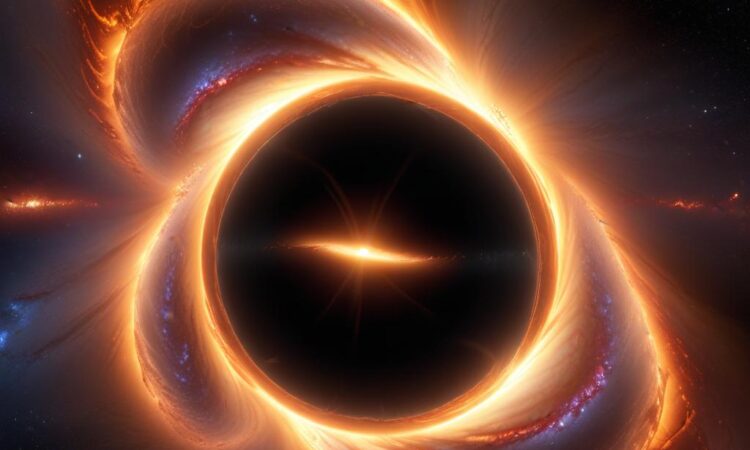Astrophysics: Recent Discoveries about Black Holes, Galaxies, and the Origins of the Universe
The universe is a vast and mysterious place, filled with wonders that continue to amaze and intrigue scientists. In recent years, advancements in technology have allowed us to explore the cosmos with unprecedented detail, leading to groundbreaking discoveries about some of the most enigmatic objects in the universe: black holes, galaxies, and the origins of the universe itself.
Black Holes: Unveiling the Unseen
Black holes, regions of spacetime where gravity is so strong that nothing, not even light, can escape, have long captivated the imaginations of scientists and the public alike. While we cannot directly observe black holes, their presence can be inferred through their gravitational effects on surrounding matter.
One of the most significant breakthroughs in black hole research has been the direct imaging of the supermassive black hole at the center of the galaxy Messier 87 (M87). This feat, achieved by the Event Horizon Telescope (EHT), provided the first visual evidence of a black hole’s shadow, confirming theoretical predictions and opening up new avenues for studying these enigmatic objects.
The EHT observations have also shed light on the complex dynamics of accretion disks, the swirling rings of gas and dust that surround black holes. These disks are thought to be the source of powerful jets of radiation and particles that emanate from black holes, impacting their surrounding environments.
Moreover, recent studies have revealed the existence of intermediate-mass black holes (IMBHs), which fall in between stellar-mass black holes formed from the collapse of stars and supermassive black holes found at the centers of galaxies. The discovery of IMBHs has challenged our understanding of black hole formation and evolution, prompting scientists to re-examine the processes that govern the growth of these enigmatic objects.
Galaxies: Unveiling the Cosmic Tapestry
Galaxies are vast collections of stars, gas, dust, and dark matter, held together by gravity. They come in a variety of shapes and sizes, each telling a unique story about their formation and evolution.
Recent observations have revealed the existence of massive galaxies that formed just a few hundred million years after the Big Bang, a time when the universe was still very young and dense. These early galaxies, known as \”reionization-era galaxies,\” provide crucial insights into the early stages of galaxy formation and the evolution of the universe as a whole.
The discovery of these early galaxies has also challenged our understanding of galaxy formation models, suggesting that galaxies may have formed earlier and more rapidly than previously thought. This has led to a reassessment of the processes that govern galaxy formation and evolution, prompting further research into the role of dark matter and other factors in the formation of these celestial giants.
Furthermore, studies of galaxy mergers have revealed the role of collisions and interactions in the evolution of galaxies. These mergers can trigger starbursts, periods of intense star formation, and can also lead to the growth of supermassive black holes at the centers of galaxies.
The Origins of the Universe: Unraveling the Cosmic Mystery
The origin of the universe remains one of the greatest mysteries in science. The prevailing theory, the Big Bang theory, posits that the universe began as an infinitely hot and dense singularity, and then expanded rapidly, eventually cooling down and forming the stars, galaxies, and planets we see today.
Recent observations of the cosmic microwave background (CMB), the faint afterglow of the Big Bang, have provided strong evidence for the Big Bang theory and have allowed scientists to determine the age and composition of the universe with remarkable precision.
Furthermore, observations of distant galaxies have revealed that the expansion of the universe is accelerating, a phenomenon attributed to the existence of dark energy, a mysterious force that is thought to permeate all of space.
The discovery of dark energy has fundamentally changed our understanding of the universe, raising new questions about the ultimate fate of the cosmos. It has also prompted scientists to search for new theories of gravity that can account for the accelerating expansion and the existence of dark energy.
Future Directions: Exploring the Frontiers of Knowledge
Astrophysics is a constantly evolving field, with new discoveries being made all the time. The coming years are poised to bring even more exciting breakthroughs in our understanding of the universe.
The launch of new space telescopes, such as the James Webb Space Telescope (JWST), will allow us to observe the universe with unprecedented sensitivity and resolution, enabling us to study the earliest stars and galaxies, the formation of planets around other stars, and the nature of dark matter and dark energy.
Ground-based observatories, equipped with advanced detectors and powerful computing capabilities, will continue to play a vital role in astrophysical research, allowing scientists to probe the mysteries of black holes, neutron stars, and other extreme objects in the universe.
The future of astrophysics is bright, filled with the promise of exciting new discoveries and a deeper understanding of the universe and our place within it.
Conclusion
Astrophysical research continues to unravel the mysteries of the universe, providing us with an increasingly detailed and nuanced understanding of our place within the cosmos. From the enigmatic black holes to the vast expanse of galaxies and the origins of the universe itself, our quest to explore the universe continues to push the boundaries of our knowledge and imagination.

